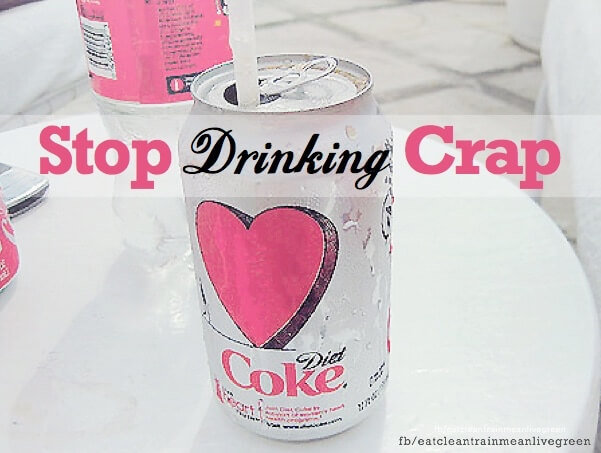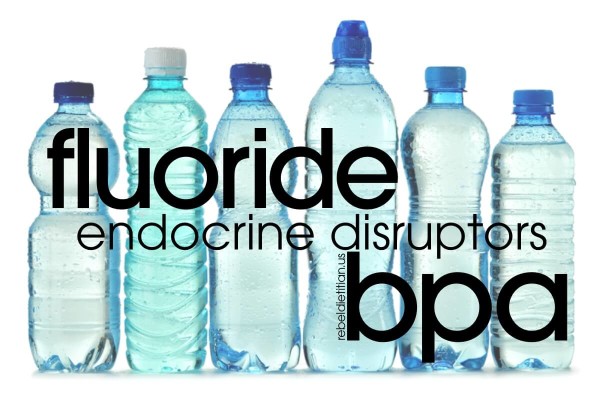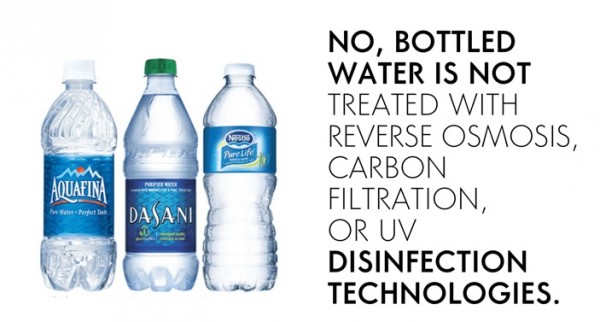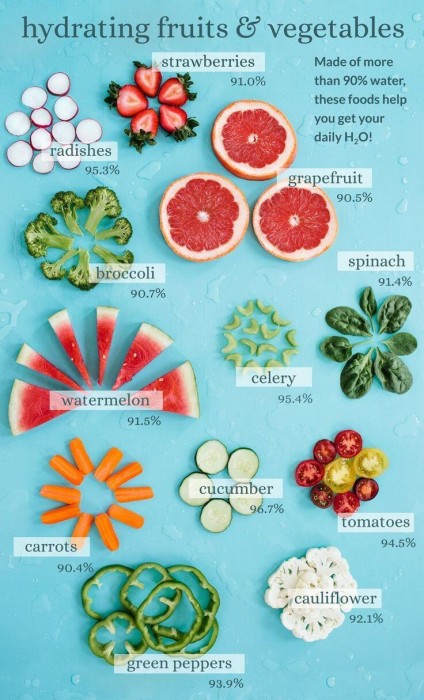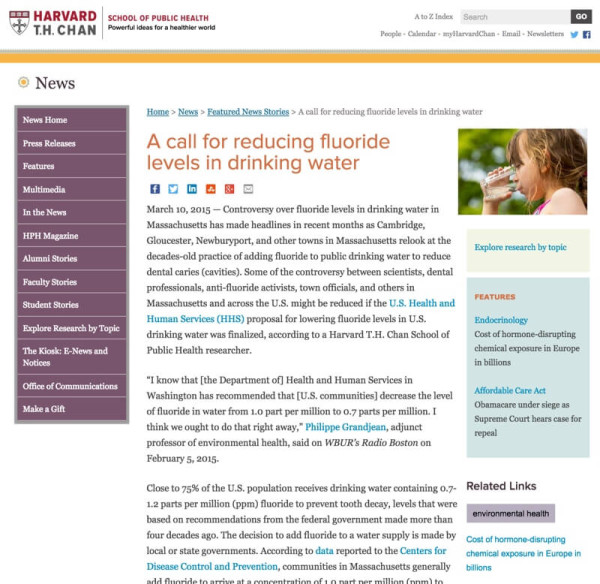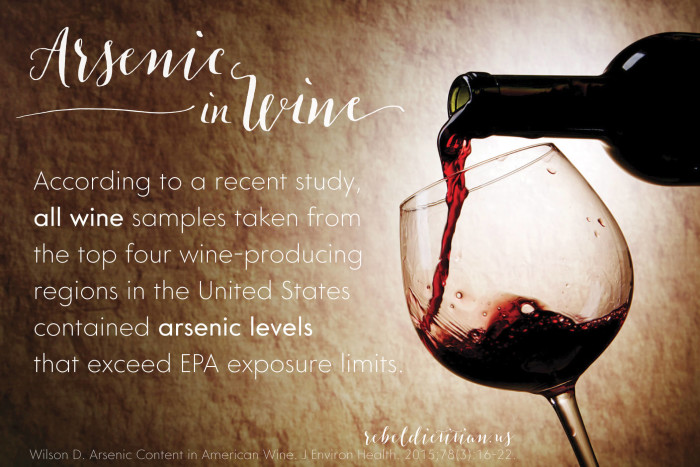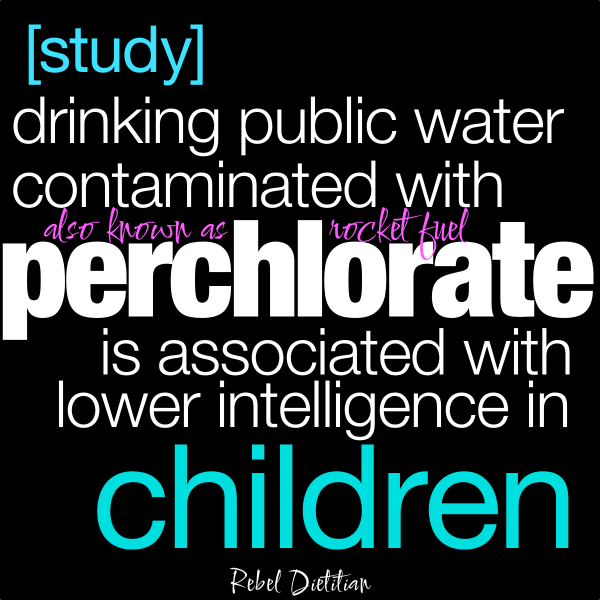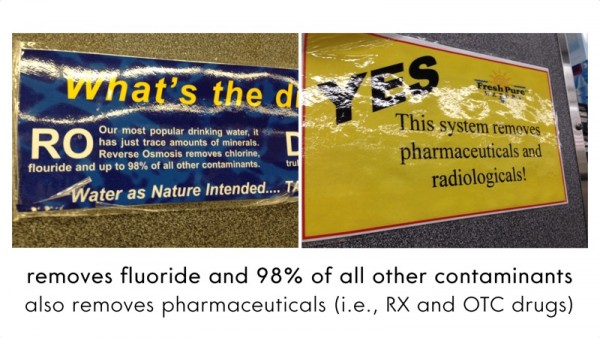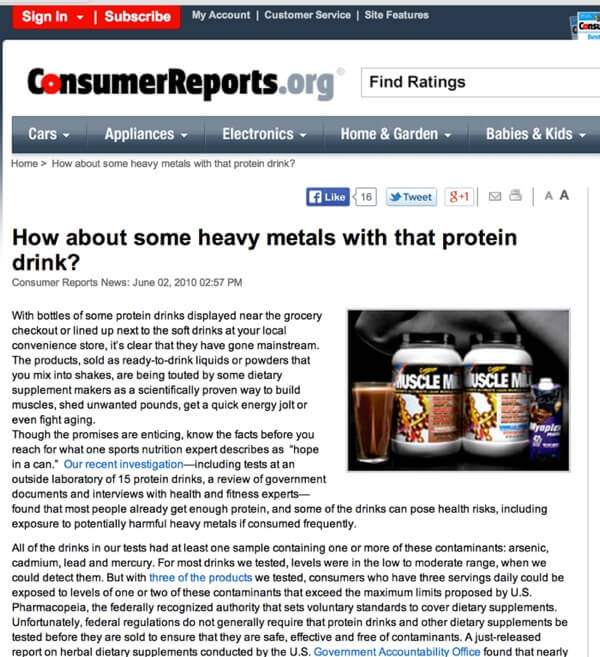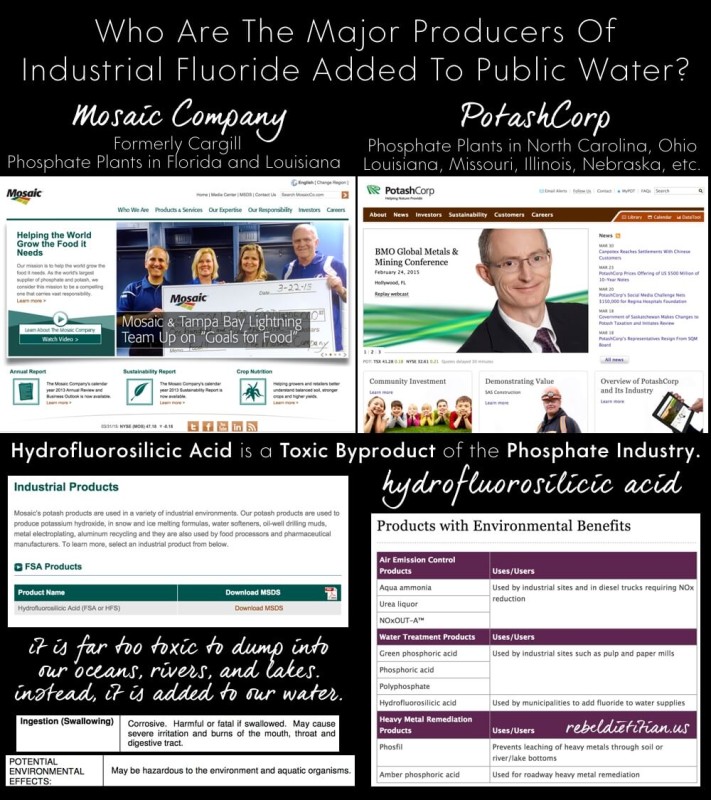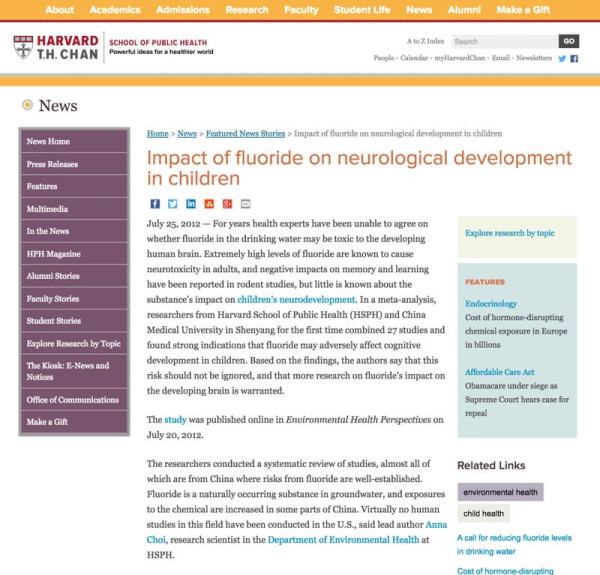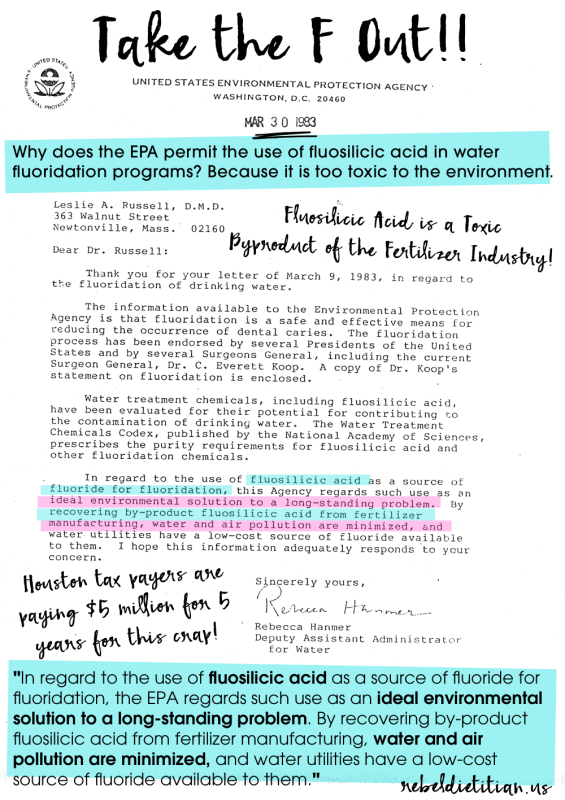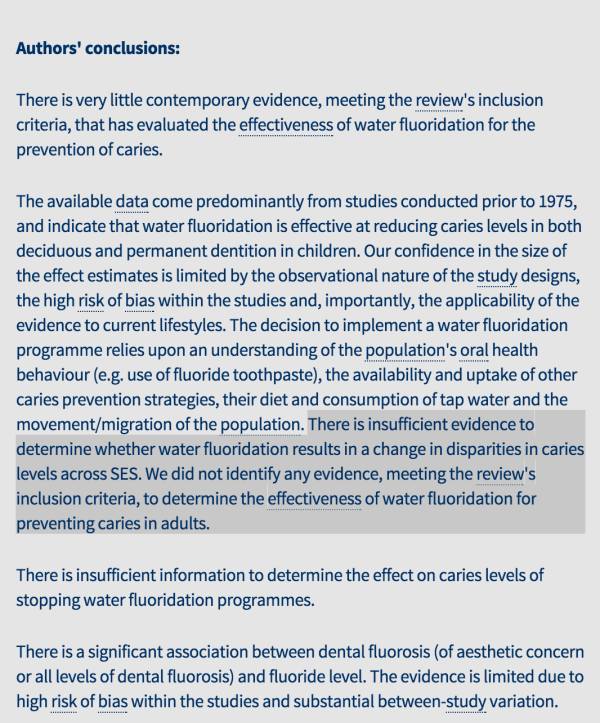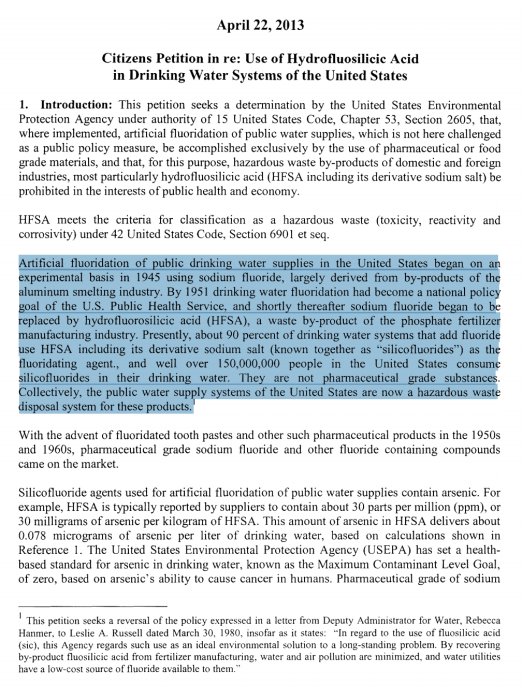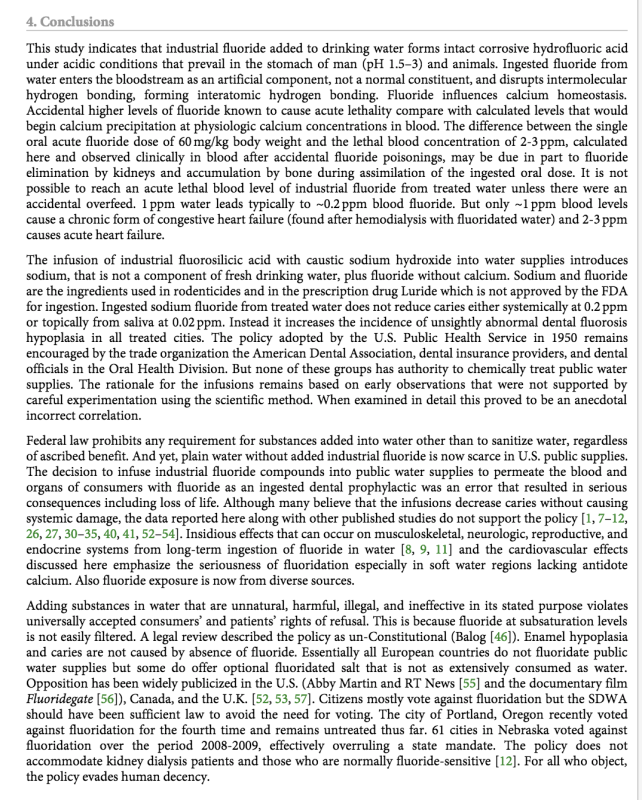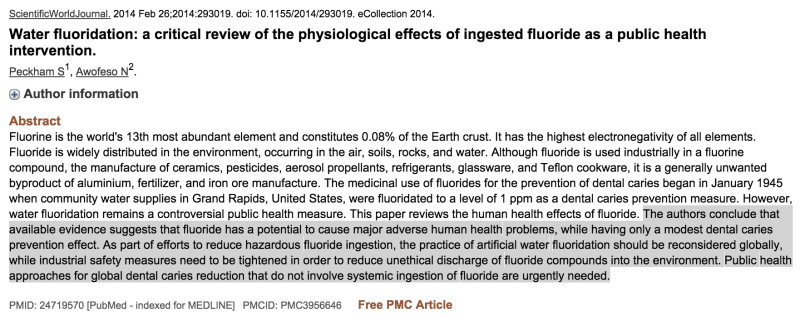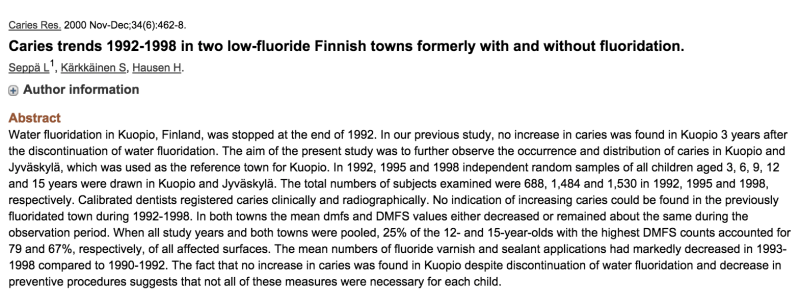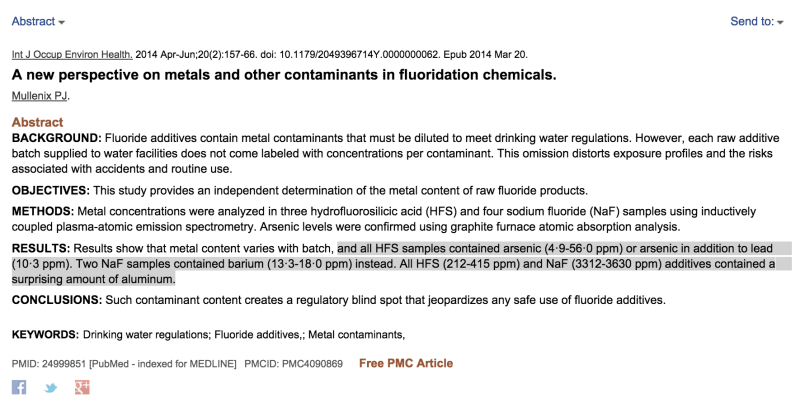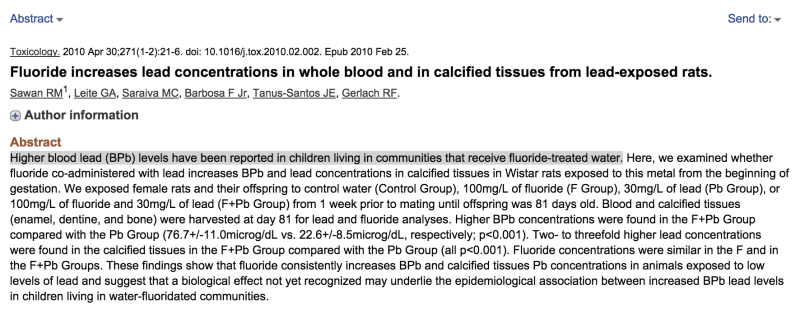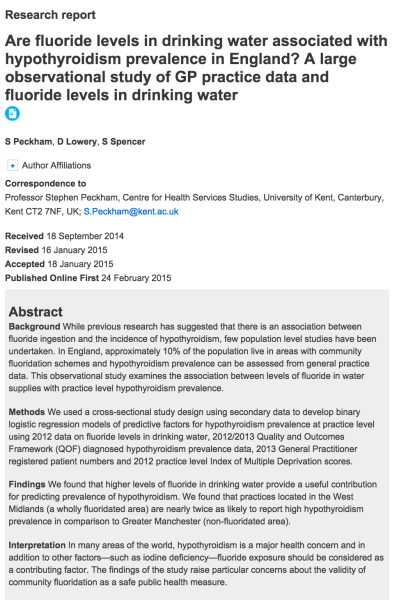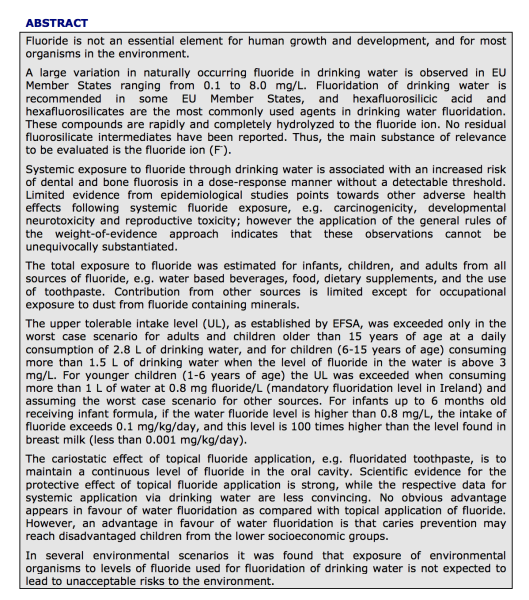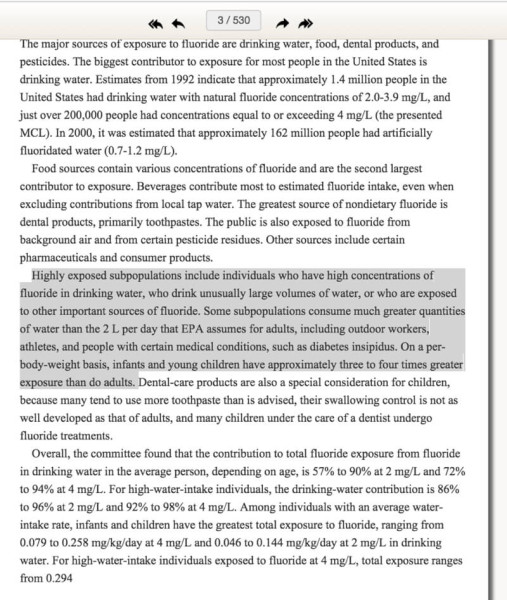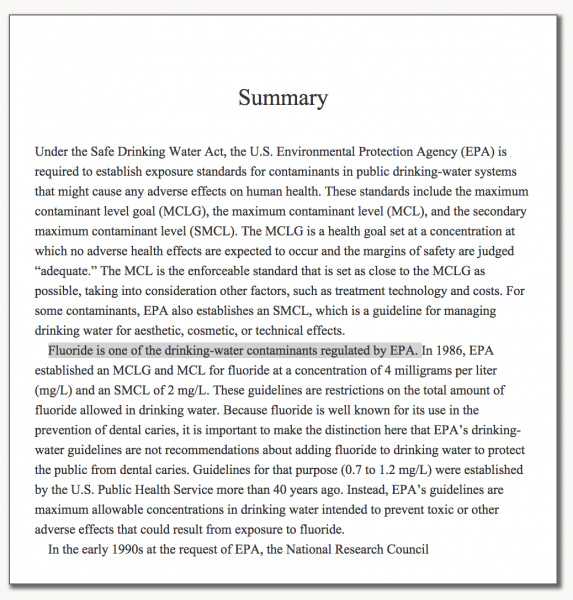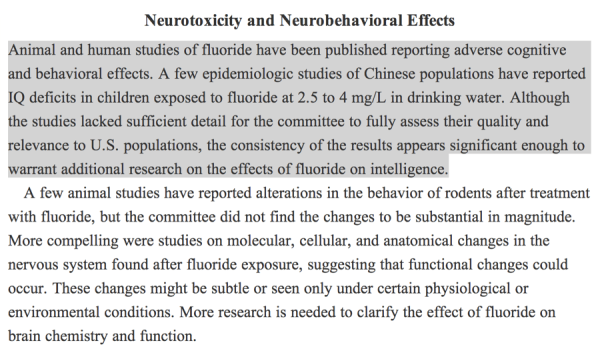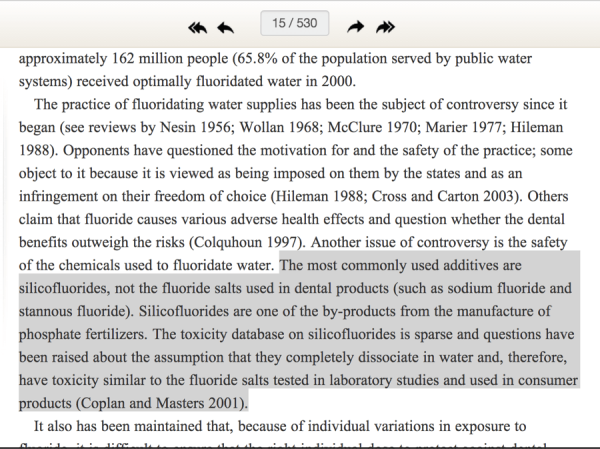Hydration with pure water is essential to optimal health and wellness. Water needs vary but depend on the food a person eats, environmental temperature and humidity, a person’s activity level and other factors. Chronic dehydration is associated with a wide range of chronic diseases including obesity and heart disease. In fact, recent research suggests drinking pure water before, or after meals, may prevent weight gain and even promote weight loss.
In addition to pure water, proper hydration can easily be achieved by consuming fresh fruits and vegetables and minimally processed beverages (e.g., fresh smoothies and juice). Whenever possible, limit intake of ultra processed and refined beverages and opt for minimally processed beverages instead. Examples of ultra processed beverages include regular and diet soda, sugary juice, commercial smoothies, protein shakes, energy drinks, and infant formula.
Filter Tap Water
Unfortunately, both bottled water and tap water are contaminated with a variety of different toxic substances. Some of which, are intentionally added (e.g., fluoride), while others are contaminants found in our environment (e.g., pharmaceuticals and industrial chemicals).
Ideally, water would be treated with reverse osmosis (RO) and carbon filtration using a superior carbon filter. These purification technologies are the most effective at removing toxic contaminants including fluoride, pharmaceuticals, radiologicals, and microorganisms.
Brita-type filters do not effectively remove potentially toxic contaminants. To ensure that a filter removes a particular contaminant, verify that it is certified for that contaminant by a reputable, independent agency.
If you have a large family or do not live near a store that offers water purification, you may want to consider investing in a quality water purification system for your home.
The water I drink is treated with reverse osmosis (RO) via an undersink water purification system. In the past, I purchased RO water in bulk from Whole Foods for around $.44 per gallon and stored it in a large glass water jug on a stainless steel water dispenser.
Ditch Bottled Water
Ditch bottled water and skip the expensive specialty waters (e.g., “alkaline water”). Like tap water, bottled water often contains the same contaminants commonly found in tap water. The difference is, bottled water is not regulated by any government agency (i.e., neither the FDA or EPA regulate bottled water) and a major source of environmental pollution.
What about alcohol?
Most alcoholic beverages are ultra processed and refined, contain ingredients derived from GMOs, and a major source of the endocrine disruptor, bisphenol A (BPA). Although small amounts of alcohol may have some health benefits, alcohol is also a significant source of “empty calories” and has been linked to fatty liver and obesity. According to the World Health Organization (WHO), more than 3 million deaths were attributable to alcohol in 2012.
What about wine?
According to a recent study, all wine samples taken from the top four wine-producing regions in the United States contained arsenic levels that exceed EPA exposure limits. According to the authors, “when taken in the context of consumption patterns in the U.S., the pervasive presence of arsenic in wine can pose a potential health risk to regular adult wine drinkers.” Arsenic is toxic. If you drink wine, opt for a product that is organic and certified free of toxic contaminants such as arsenic and lead.
Get the F (Fluoride) Out!
Contrary to popular belief, fluoride is not needed — in any amount — for human health. Fluoride is not an essential nutrient and there’s no such thing as fluoride deficiency. In the 1950s, dentists believed that fluoride deficiency caused cavities, just like a deficiency of vitamin D causes osteoporosis; however, it is now widely accepted that cavities are not a result of fluoride deficiency (source). The truth is, fluoride is a potent neurotoxin associated with a wide range of detrimental health effects in both humans and wildlife.
According to the Cochrane Collaboration – one of the most prestigious and respected independent research organizations in the world – there is insufficient evidence to support mandatory water fluoridation; which, is concerning considering there is evidence that suggests a positive relationship between water fluoridation and multiple chronic diseases including attention-deficit hyperactivity disorder (ADHD) and dyslexia, reduced intelligence, infertility, reduced immune function, dental fluorosis, impaired mandibular bone quality, and hypothyroidism (and here and here). Doctors in Europe and South America reportedly prescribed fluoride to reduce thyroid function up until the 1950s (source).
The scariest part is, most Americans are largely unaware of the fact that more than 97% of the western European population drinks non-fluoridated water (source). The only western European countries that allow salt fluoridation are Austria, France, Germany, Spain, and Switzerland.
Furthermore, research published in Germany, Canada, Finland, and Cuba have shown ending water fluoridation is not associated with a rise in cavities.
Infants and Children
Whenever possible, breastfeed your infant or use an organic powdered infant formula mixed with fluoride-free water to feed your infant. According to an Environmental Working Group analysis of National Academy of Sciences data, released in March 2006, found that in 25 of the 28 largest US cities, fluoride concentrations in tap water alone would put 8-to-36 percent of all babies up to 6 months of age over the safe dose of fluoride on any given day. In February 2008, EWG asked the Federal Trade Commission to stop Nursery Water, one of the nation’s biggest sellers of bottled water for infants, from advertising that its fluoridated water is safe for babies, in violation of FDA rules and American Academy of Pediatrics guidance.
Learn More
Smoothie Recipes
To view smoothie recipes and tips, visit the page titled Smoothies.
Add Protein Without Powder
To learn more about adding protein to smoothies without protein powder, see my post titled Add Protein Without Powder.
Posters and Charts
To view a collection of my posters and charts, visit the page titled Posters.
Pinterest and Facebook
Posters and Charts
Except where otherwise noted, content on this site is licensed under a CC BY-NC-ND 4.0 license. This means you are free to use my work for personal use (e.g., save the file to your computer or share via social media) as long as you do not modify the image or use the image for commercial purposes ($).
References:
Rehm J. The Risks Associated With Alcohol Use and Alcoholism. Alcohol Research and Health. 2011;34(2):135-143.
Measuring the Health Risks and Benefits of Alcohol. Available at: http://pubs.niaaa.nih.gov/publications/10report/chap01a. Accessed October 25, 2015.
Traversy G, Chaput J-P. Alcohol Consumption and Obesity: An Update. Current Obesity Reports. 2015;4(1):122-130. doi:10.1007/s13679-014-0129-4.
CDC (Centers for Disease Control and Prevention). 2009. Fourth National Report on Human Exposure to Environmental Chemicals. Atlanta, GA: Centers for Disease Control and Prevention. Available: http://www.cdc.gov/exposurereport/pdf/FourthReport.pdf [accessed 28 July 2014].
Maternal perchlorate levels in women with borderline thyroid function during pregnancy and the cognitive development of their offspring: data from the Controlled Antenatal Thyroid Study. J Clin Endocrinol Metab. 2014 Nov;99(11):4291-8. doi: 10.1210/jc.2014-1901.
Pearce EN, Lazarus JH, Smyth PP, et al. Perchlorate and thiocyanate exposure and thyroid function in first-trimester pregnant women. J Clin Endocrinol Metab. 2010;95:3207–3215.
Blount BC, Valentin-Blasini L, Osterloh JD, Mauldin JP, Pirkle JL. Perchlorate exposure of the US Population, 2001–2002. J Exposure Sci Environ Epidemiol. 2007;17:400–407.
Jain RB. Impact of pregnancy and other factors on the levels of urinary perchlorate, thiocyanate, and nitrate among females aged 15–44 years: data from National Health and Nutrition Examination Survey: 2003–2008. Chemosphere. 2013;91:882–887.
Iheozor-Ejiofor Z, Worthington HV, Walsh T, O’Malley L, Clarkson JE, Macey R, Alam R, Tugwell P, Welch V, Glenny AM. Water fluoridation for the prevention of dental caries. Cochrane Database of Systematic Reviews 2015, Issue 6. Art. No.: CD010856. DOI: 10.1002/14651858.CD010856.pub2.
Miller-Ihli, N.J., Pehrsson, P.R., Cutrufelli, R.L. and Holden, J.M. 2003. Fluoride content of municipal water in the United States: what percentage is fluoridated? J Food Comp Anal, 16(5):621-628
Pehrsson, P., Perry, C., Cutrufelli, R., Patterson, K., Wilger, J., Haytowitz, D., Holden, J., Day, C., Himes, J., Harnak, L., Levy, S., Wefel, J., Heilman, J., Phillips, K., Rasor, A. 2006. Sampling and initial findings for a national study of fluoride in drinking water. J. Food Comp. Anal. 19:S45-S52.
Breeze, M. 2002. Public knowledge and attitudes regarding the flouride phosphate industry and related issues. FIPR Pub. 00-PUB-184.
Fluoridation: Errors and Omissions in Experimental Trials, 2 Ed. Phillip Sutton (1960)
National Research Council. Fluoride in Drinking Water: A Scientific Review of EPA’s Standards. Washington, DC: The National Academies Press, 2006.
National Research Council. Safe Water From Every Tap: Improving Water Service to Small Communities. Washington, DC: The National Academies Press, 1997.
Richard Sauerheber, Physiologic Conditions Affect Toxicity of Ingested Industrial Fluoride. Journal of Environmental and Public Health, vol. 2013, Article ID 439490, 13 pages, 2013. doi:10.1155/2013/439490
Malin AJ, Till C. Exposure to fluoridated water and attention deficit hyperactivity disorder prevalence among children and adolescents in the United States: an ecological association. Environ Health. 2015 Feb 27;14(1):17. doi: 10.1186/s12940-015-0003-1.
Anna L. Choia, Ying Zhangb, Guifan Sunc, David C. Bellingera, Kanglin Wange, Xiao Jing Yangf, Jin Shu Lif, Quanmei Zhengc, Yuanli Fug, Philippe Grandjeana. Association of lifetime exposure to fluoride and cognitive functions in Chinese children: A pilot study. Neurotoxicology and Teratology (2015). Volume 47;96–101. DOI: 10.1016/j.ntt.2014.11.001
Philippe Grandjean, Philip J Landrigan. Neurobehavioural effects of developmental toxicity. The Lancet Neurology (2014). Volume 13, No. 3, p330–338. DOI: 10.1016/S1474-4422(13)70278-3
Gas’kov A, et al. (2005). The specific features of the development of iodine deficiencies in children living under environmental pollution with fluorine compounds. Gig Sanit. Nov-Dec;(6):53-5.
Galletti P, Joyet G. (1958). Effect of fluorine on thyroidal iodine metabolism in hyperthyroidism. Journal of Clinical Endocrinology 18(10):1102-1110.
Burgi H, et al. (1984). Fluorine and the Thyroid Gland: A Review of the Literature. Klin Wochenschr. 1984 Jun 15;62(12):564-9.
Wang X, et al. (2001). Effects of high iodine and high fluorine on children’s intelligence and thyroid function. Chinese Journal of Endemiology 20(4):288-90.
Xu Y, et al. (1994). The effect of fluorine on the level of intelligence in children. Endemic Diseases Bulletin 9(2):83-84.
Susheela AK, et al. (2005). Excess fluoride ingestion and thyroid hormone derangements in children living in New Delhi, India. Fluoride 38:98-108.
Cross DW, Carton RJ. Fluoridation: A Violation of Medical Ethics and Human Rights. Int J Occup Environ Health 2003;9(1):24–29. DOI: 10.1179/107735203800328830
Association of fluoride in water for consumption and chronic pain of body parts in residents of San Kamphaeng district, Chiang Mai, Thailand. Trop Med Int Health. 2012 Sep;17(9):1171-6. doi: 10.1111/j.1365-3156.2012.03061.x. Epub 2012 Aug 5.
Grandjean P, Landrigan P. Neurobehavioural effects of developmental toxicity. The Lancet. 2014.
Ren Da-Li. (1989). A study of the intellectual ability of 8-14 year-old children in high fluoride, low iodine areas. Chinese Journal of Control of Endemic Diseases 4:251.
R. Porter, Ed., The Merck Manual for HealthCare Professionals, ©2010-2013 Merck Sharp & Dohme Corp., a subsidiary of Merck & Co., Inc., Whitehouse Station, N.J., U.S.A.
B. D. Gessner, M. Beller, J. P. Middaugh, and G. M. Whitford, “Acute fluoride poisoning from a public water system,” The New England Journal of Medicine, vol. 330, no. 2, pp. 95–99, 1994.
Martinez-Mier EA, Soto-Rojas AE. Differences in exposure and biological markers of fluoride among White and African American children. J Public Health Dent. 2010 Summer;70(3):234-40. doi: 10.1111/j.1752-7325.2010.00173.x.
B. Hileman, “New studies cast doubt on fluoridation benefits,” Chemical and Engineering News, vol. 67, no. 19, p. 66, 1989.
P. Sutton, “Fluoridation; errors and omissions in experimental trials,” in The Greatest Fraud: Fluoridation, Melbourne University Press, Melbourne, Australia; Kurunda, Lorne, Australia, 1996.
D. Balog, “Fluoridation of public water systems: valid exercise of state police power or constitutional violation?” Pace University Environmental Law Review, vol. 14, no. 2, p. 645, 1997.
S. Peckham, “Slaying sacred cows: is it time to pull the plug on water fluoridation?” Critical Public Health, vol. 22, no. 2, pp. 159–177, 2011.
Myron J. Coplan, Steven C. Patch, Roger D. Masters, Marcia S. Bachman. “Confirmation of and explanations for elevated blood lead and other disorders in children exposed to water disinfection and fluoridation chemicals.” NeuroToxicology, Volume 28, Issue 5, September 2007, Pages 1032–1042 DOI: 10.1016/j.neuro.2007.02.012
Myron J. Coplan, Masters RD, Coplan MJ, Hone BT, Dykes JE. SCHER Critical review of any new evidence on the hazard profile, health effects, and human exposure to fluoride and the fluoridating agents in drinking water. NeuroToxicology, 2000 Dec;21(6):1091-100.
Masters RD, Coplan MJ, Hone BT, Dykes JE. Association of silicofluoride treated water with elevated blood lead. Neurotoxicology. 2000 Dec;21(6):1091-100.
Current issues regarding health surveillance of fluoride concentrations in foods. Cad Saude Publica. 2012 Mar;28(3):573-82. http://dx.doi.org/10.1590/S0102-311X2012000300017
Dahl C, Søgaard AJ, Tell GS, Flaten TP, Hongve D, Omsland TK, Holvik K, Meyer HE, Aamodt G; Norwegian Epidemiologic Osteoporosis Study (NOREPOS) Core Research Group. Do Cadmium, Lead, and Aluminum in Drinking Water Increase the Risk of Hip Fractures? A NOREPOS Study. Biol Trace Elem Res. 2014 Jan;157(1):14-23. doi: 10.1007/s12011-013-9862-x. Epub 2013 Nov 29.
Physiology and toxicity of fluoride. Indian J Dent Res. 2009 Jul-Sep;20(3):350-5. doi: 10.4103/0970-9290.57379.
A review of the role of solar ultraviolet-B irradiance and vitamin D in reducing risk of dental caries. Dermatoendocrinol. 2011 Jul-Sep; 3(3): 193–198. doi: 10.4161/derm.3.3.15841
Chronic fluoride toxicity and myocardial damage: antioxidant offered protection in second generation rats. Toxicol Int. 2011 Jul;18(2):99-104. doi: 10.4103/0971-6580.84260.
Water fluoridation: a critical review of the physiological effects of ingested fluoride as a public health intervention. Scientific World Journal. 2014:293019. doi: 10.1155/2014/293019.
SCHER, Opinion on critical review of any new evidence on the hazard profile, health effects, and human exposure to fluoride and the fluoridating agents of drinking water. 16 May 2011.
Seppa L, Karkkainen S, Hausen H. (2000). Caries Trends 1992-1998 in Two Low-Fluoride Finnish Towns Formerly with and without Fluoridation. Caries Research 34: 462-468.
Kunzel W, Fischer T, Lorenz R, Bruhmann S. (2000). Decline of caries prevalence after the cessation of water fluoridation in the former East Germany. Community Dentistry and Oral Epidemiology 28: 382-9.
Kunzel W, Fischer T. (2000). Caries prevalence after cessation of water fluoridation in La Salud, Cuba. Caries Research 34: 20-5.
Maupome G, Clark DC, Levy SM, Berkowitz J. (2001). Patterns of dental caries following the cessation of water fluoridation. Community Dentistry and Oral Epidemiology 29: 37-47.
Dental Fluorosis: Chemistry and Biology Critical Reviews of Oral Biology and Medicine 13: 155-70.
 Rebel Dietitian Dana McDonald, RD
Rebel Dietitian Dana McDonald, RD 